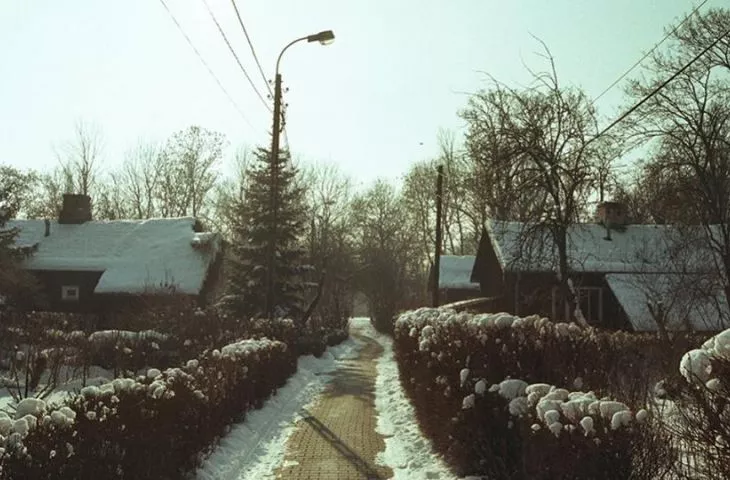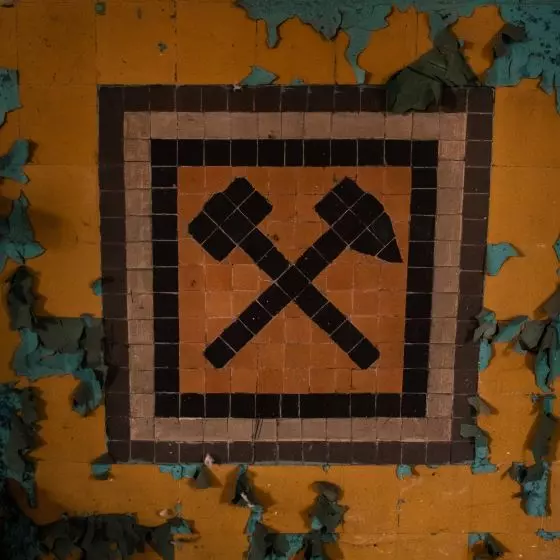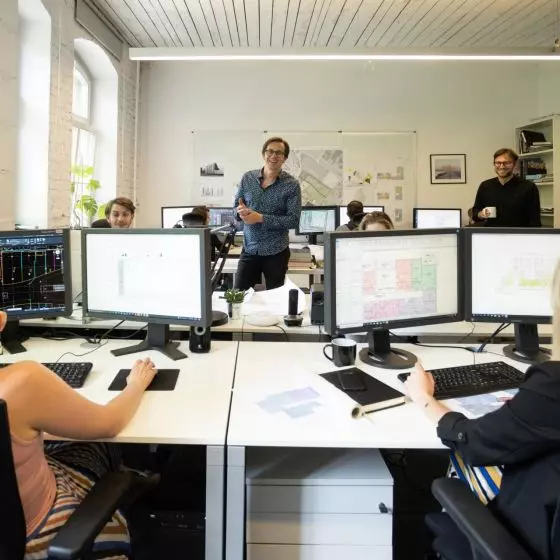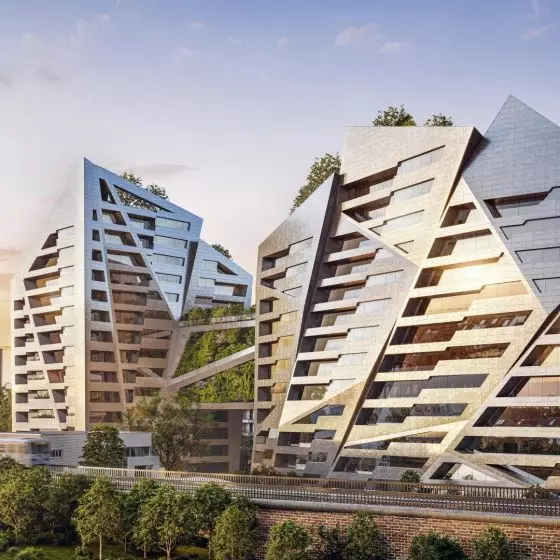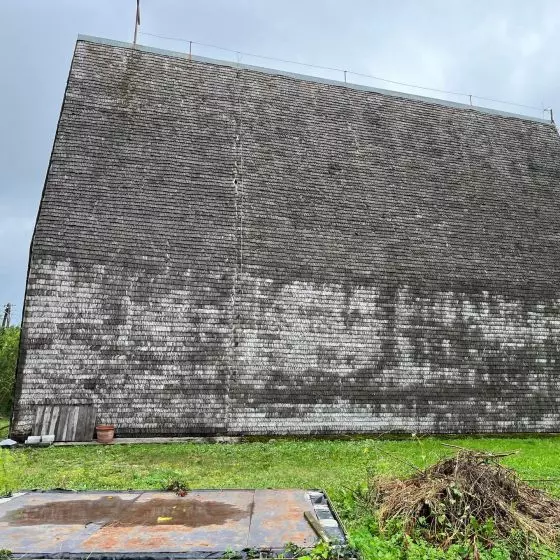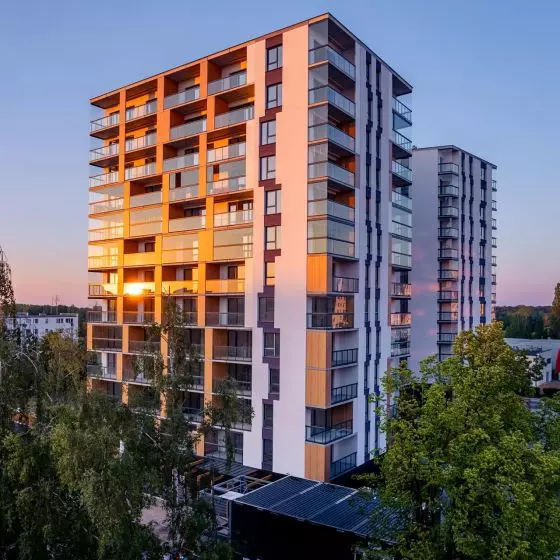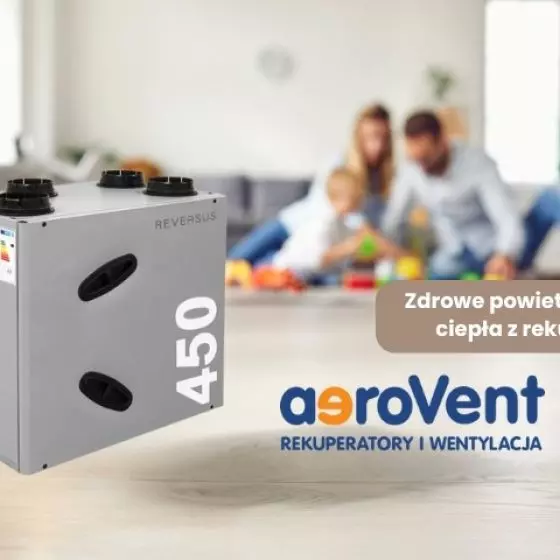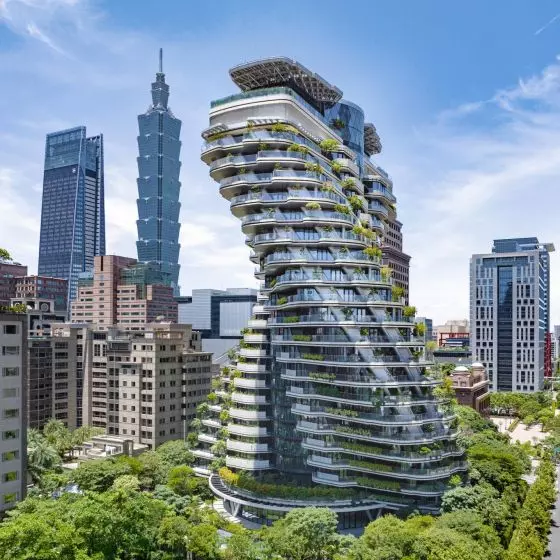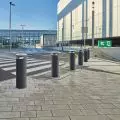The wooden Finnish houses in the center of Warsaw have a special power to unite people, and although they function as a monument, it is only thanks to the people that they have a chance to survive. Erected to temporarily serve the reconstruction of the city, today they are its inseparable, living tissue.
Through Russia to Poland
In March 1945, the first train filled with ready-made components for building a small house arrived in Warsaw. The two-room houses were given as reparations from Finland to the Russians, and came to Poland as a gift from the USSR. Just a few months later, the first housing development of wooden Finnish houses was erected in the post-war capital. The idea of small houses made of ready-made, prefabricated elements was pioneered by the Swedes in the 1930s. The cottages were an answer to the housing shortage. The Finns picked up the idea and improved the construction of the house so that it could be built even faster and cheaper. Very quickly their other advantages were also appreciated: functionality, robustness and ease of assembly. Just like today, their construction allowed a grown man, along with two helpers, to erect an entire house in no more than two weeks. In Warsaw, Finnish houses - more than 500, were given to the Bureau of Capital Reconstruction (an institution employing 1,500 specialists and more than 9,000 builders), which used them for housing for its employees.
Three housing estates were built at the time: in Pole Mokotowskie, on Szwoleżerów Street and the one that partly survives to this day, on top of the escarpment, at the back of Ujazdowski Park. Originally, the settlement in Upper Ujazdów consisted of 95 buildings, among which a bathhouse, kindergarten and store were also erected. They ranged from 54 to 60 sq. m. in size, had two rooms with a kitchen, an attic and a veranda. These small houses had water, sewage and electrical installations. The walls were covered with cardboard, heat was provided by a stove. The estate was located close to Downtown, the place where the designers, engineers, constructors from BOS worked. Immediately after their construction, the houses in Jazdów were inhabited by, among others, the co-authors of MDM and Trasa W-Z Stanisław Jankowski and Jan Knothe, urban planner Kazimierz Marczewski or Jan Bogusławski, author of the urban plan for the Jazdów estate, and later designer of the reconstruction of the Royal Castle.
Source: Jaszuński family archive | domkifinskie.etnograficzna.pl
artistic gardens
The years 1968-1974 saw the demolition of a dozen or so cottages for the construction of the Lazienkowska Route and the erection of the French Embassy. Architects moved into new apartments, and their place was quickly taken by artists. Houses belonging to the city, surrounded by greenery, invited not only to creative work, but also to lead a social life. Jonasz Kofta, Barbara Wrzesińska, Maria Czubaszek, Jan Pietrzak, among others, took up residence in Jazdów. Until the 1980s, the Finnish houses and their famous residents were an urban curiosity, and strollers came especially to look at them. When martial law was imposed, the estate was fenced off, and Yazd functioned as a unit of ZOMO troops.
Source: Baumiller family archive | domkifinskie.etnograficzna.pl
demolitions
The residents of the houses arranged them without any guidelines or control. They insulated walls, turned verandas into bathrooms, added sheds and extensions. These - illegal from the point of view of the law - innovations were one of the arguments to demolish the cottages. Between 2005 and 2007, several more cottages were dismantled. Their place was taken by the German Embassy, among others. In 2012, another 4 were demolished, and that's when the war for Jazdów began. Until 2014, there were heated discussions around the Jazdów Estate. The authorities of the Śródmieście District decided to allocate this attractive area for development for commercial and public use. However, residents and activists formed an initiative called Otwarty Jazdów defending the historic Estate. In the months that followed, a series of social, cultural, educational and artistic events took place, demonstrating the enormous potential of the space.
Jari Vilén, then Finland's ambassador to Poland, whose grandfather worked in one of the factories producing wooden prefabricated units, also stood up in defense of the houses. Vilén stressed that the Finns deeply regretted the mass demolition of similar buildings on their territory in the 1960s. They are blowing and huffing at the surviving relics today. On July 11, 2013, the Warsaw City Council passed a resolution under which public consultations can take place at the request of Warsaw residents signed by at least 1,000 people. Already in September, the Association of Residents of Jazdów Finnish Houses submitted a request for consultation on the Jazdów Estate area, signed by more than 2,000 people.
the estate's success
The Warsaw authorities granted the request and proceeded with the public consultation. Open Jazdów formed a so-called local partnership, which could temporarily manage the Estate in cooperation with the district and city offices. An international conference on community management of urban space was held in the fall of 2016.
In the spring of 2017, the settlement's urban layout was listed in the Register of Historic Places, the houses - in their communal records. A large part of the buildings that have been preserved and still belong to the city has been used for cultural and social activities. The green area and the cottage estate got a second life, becoming the city's largest open community center.
Summer 2020, photo Open Yazdów
The future of
Wooden architecture requires care, renovation of repairs. The past year has further complicated the life of more than one existence. Although there were no events at the Jazdów Estate, it was still necessary to maintain the houses, including paying rent for them. Jazdów has entered a model of community financing, where anyone can not as become a patron of the Estate, even if they support it with 10 zloty a month.
"The Open Jazdów Partnership is currently raising funds to develop the idea of the Estate as a kind of experimental enclave in the heart of the city. Repairs and maintenance of the cottages' infrastructure have also always been on the side of the organization - the tenants. The Partnership brings together Yazd organizations and residents of the Estate, so we thought that with a common repair fund it would be easier to undertake smaller and larger repairs in the cottages most in need." - writes Wojciech Matejko of the Otwarty Jazdów Partnership.
Otwarty Jazdów posts both factual and financial reports on its website. As Wojciech Matejko says, since you take money from the people, you have to be as transparent as possible and communicate what you do with those funds.
As soon as everything is back to normal, the Open Yazd University project will offer all sorts of artistic, cultural, social and educational activities. On top of that, completely free of charge.
In the old Finnish boards lies the power to unite people, and the future of the Estate depends on them, too.
Marta Kowalska
The information comes from:
Małgorzata Kunecka, Daie Kunecki, finish houses - personal memory, history, contemporaneity. Ethnografic project at the border of science and social life. "Ethnografia. Practices, Theories, Experiences."






